Report of Summer Social Practice
-- Painting a natural picture with sounds:
The inheritance and development of Chinese Ventriloquism
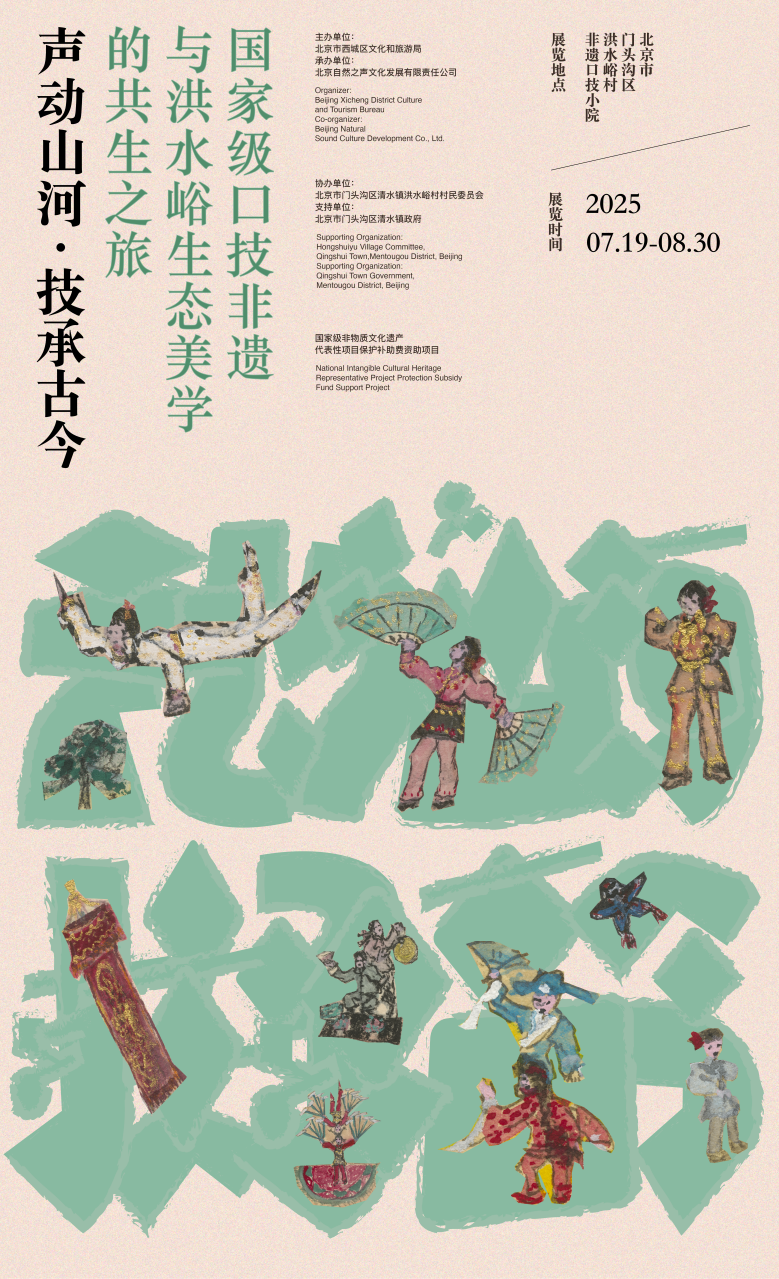
Chinese Ventriloquism, as a unique soundart in Chinese civilization, has been inherited for more than 2,300 years, and has always interpreted the Chinese people's reverence for nature and symbiosis with the wisdom of "human voices imitating the music of the heavens. In July, a unique Chinese Ventriloquism-themed exhibition and a creative performance integrating intangible cultural heritage (ICH) works—including Chinese Ventriloquism, magic, shadow puppetry, Meihua Daggu (Plum Blossom Drum), and stand-up crosstalk—were held in Hongshuiyu Village, Beijing.
In such a quiet small village, is the integration of ICH and rural areas merely a new eye-catching form of cultural and tourism innovation? With these questions in mind, I was invited by Zhang Jianping, the First Secretary of Hongshuiyu Village, to immerse myself in the curation and interviews of this series of events as the curator and host of the event.
I. Oriental Aesthetics of Sound and Painting Narrative: "Painting in Sound, Sound in Painting
When mentioning intangible cultural heritage, the first thing that flashes in many people's mind is its "fragile" and "brittle" label, people are used to framing it with "inheritance" and "protection", and defaulting to the idea that it is a landscape living in the past. In fact, People often think it belongs to the past, yet overlook that it is advancing with the times in a unique way.
The purpose of the exhibition is not simply to present and reconstruct the tradition, nor to make the non-heritage something that can only be touched in museums or by tiptoeing.Rather, we want it to grow so that anyone can touch it, experience it, and learn it. Through Chinese Ventriloquism, a sonic treasure with a history of more than 2,000 years, we use the natural landscape of Hongshuiyu Village as a base to build an immersive space that integrates sound and paintings of landscapes.

Exhibition Hall and Aerial View of Hongshuiyu Village
One of the main threads of the exhibition unfolds with two long scrolls of Tianqiao paintings by master ventriloquist and magician Niu Yuming (Zhang Jianping's uncle). The lively street scenes, residential courtyards, kite-flying children, hawkers, acrobats and shouting traders, the market formed by the citizens themselves, and the handsome lower-case scripts beside the paintings, recreated the images of TianQiao in his memory and present a “grand view of Tianqiao.”
Although he never formally studied painting, the second uncle captured the grounded essence of everyday life through his own eyes, transferring vivid memories onto paper. more than 40 acrobatic projects jumped to the paper, the picture is lifelike, the characters full of animation, the four-metre-long scroll is a Tianqiao version of the meaning of the Riverside Scene at Qingming Festival.
Five lines, eight works, three religions and nine streams, the famous "eight monsters", the fireworks on earth so that people who have not experienced the "Tianqiao Scene" can also feel the touchability of culture. While inheriting Chinese Ventriloquism, he also has another identity, the national level magic performance artist. From Chinese Ventriloquism to magic to painting, he continuously innovates and transcends boundaries. At the exhibition site, ventriloquist Niu Yuliang and Niu Yuming performed the ventriloquist's "A Hundred Birds Towards the Phoenix" on the same stage as Zhang Jianping and his second uncle Niu Yuming.

The First Tianqiao Scroll

The Second Tianqiao Scroll
Exhibition Site
Another main line of the exhibition is the combination and experience of Chinese Ventriloquism and life. in tandem with scrolls,viewers are offered an immersive audio-visual experience. 74 precious segments collected from various footbridges and marketplaces in those years, the sound of gongs and drums, were edited into two sound "scrolls", the memory of the sale of ice-sugar gourds, the sale of mutton head meat, the sale of head oil and snowflake ointment, as well as the warmth of the memories of the "sharpening scissors le". The sound of "sharpening scissors" correspondingwith the visual scrolls and panels of the exhibition, drawing people back to their childhood and 1960s Tianqiao..
The exhibition becomes vivid, flavorful warm, and full of human touch and everyday charm. The audience can interactively perceive the oriental aesthetics of "painting in sound and sound in painting", and the dialogue between ancient techniques and modern aesthetics can attract young people to approach the non-legacy on their own initiative.


74 Pieces of Kouji Audio
II. The Thousand-Year Inheritance of the Sound of Nature
Interviewing Master Niu Yuliang (great-uncle of Zhang Jianping) is more like listening to a story to learn history and teaching you how to observe life to learn the skills in context. He started with the junior high school text "Chinese Ventriloquism", which instantly brought the listener closer to the skill. He then performed the different barks of a pet dog, a watchdog, and a puppy. The cry of a bird in fear when it is captured, the cry of a bird that plays dead when it is captured and then breaks free at once when one opens their hands.
Captivated by the performance,the listener than heard, the master narrated the story of the great heritage of Chinese Ventriloquism dating back to around the Han Dynasty, which is "Lord Meng Chang crossing the Hangu Pass at night". Lord Meng Chang fled to the wall of Hangu Pass at night to avoid the pursuit of Qin, but only at daybreak could he open the gate to Qi, a clever attendant had a plan and learnt to crow like a rooster, and the roosters in the whole city all crowed, so the officials and soldiers guarding the city opened the gate, and Lord Meng Chang was able to escape.
This is the tale of an ancient wartime strategy where a rooster’s crow and a dog’s trickery defeated the power of tigers and leopards. When talking about Wen Banniang, the female ventriloquist of the Northern Song Dynasty and the first female ventriloquist in China, the master talked about the programme called "Calling for Fruit" performed by Wen Banniang, and the master performed nine kinds of yells for selling vegetables while introducing this programme.
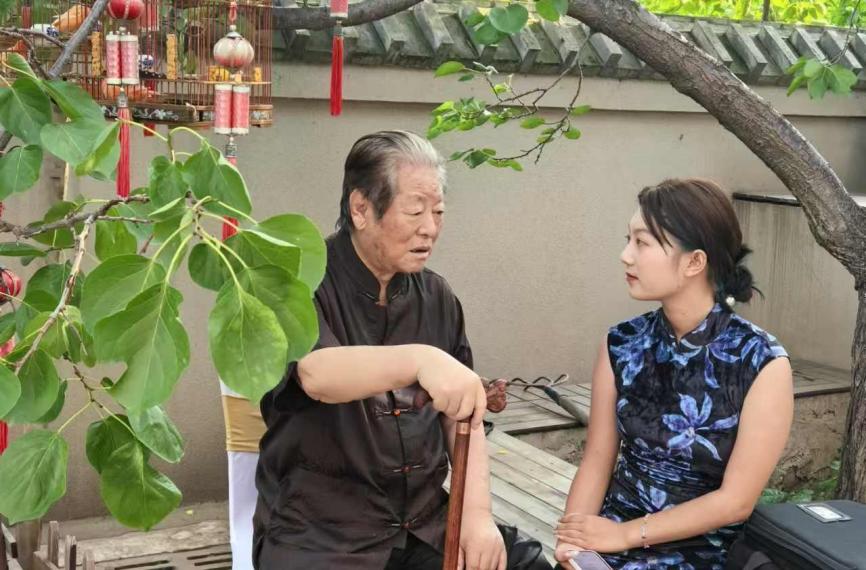
On-site Interview
Afterwards, the master also highlighted the "five notes between the throats" created by the masters of Chinese Ventriloquism during the Yuan dynasty, and the combination of Chinese Ventriloquism singing to simulate the wailing of geese and the sand and wind outside the country in plays such as "Autumn in the Han Palace," which broadened the dramatic expressiveness of Chinese Ventriloquism.
Zhang Kunshan (known as "Bainiao Zhang") of was a "grand master of Chinese Ventriloquism" at Tianqiao in Beijing during the late Qing Dynasty and early Republic of China. Renowned throughout the capital for his extraordinary skill in imitating the calls of hundreds of birds, he was one of the "Eight Eccentrics of Tianqiao." His craft represented the pinnacle of traditional Chinese Chinese Ventriloquism rooted in folk culturebecoming an important symbol of Beijing's folk heritage.
Tang Jincheng, a pioneer of innovation in Chinese Ventriloquism in the 20th century, was the first to advocate "scientific Chinese Ventriloquism", integrating anatomical principles into vocal training. His compiled work New Compilation of Chinese Ventriloquism systematically organized ventriloquial techniques. The piece he choreographed, Shanghai Fire, used human voices to simulate the sounds of artillery, trams, and telegraphs, recreating scenes of the Songhu Anti-Japanese War, which paved the way for Chinese Ventriloquism to move onto the stage.
Drawing on his experience, Master Niu Yuliang wrote Chinese Chinese Ventriloquism, and encouraged university students to build confidence, study more history, and dedicate effort to researching materials in order to excel in their academic pursuits.

Heritage Map of Intangible Cultural Heritage (ICH) Kouji Inheritance

III. Contemporary Responsibilities and Missions of Chinese Ventriloquism Inheritors
To this day, Master Niu Yuliang still remembers the overwhelming amazement he felt when he watched a performance by the China Acrobatic Troupe for the first time. It was from that moment on that he set his goal of joining the troupe. So, he insisted on practicing every day, striving for technical excellence, to train himself to become an acrobat with high acrobatic skills and cultural heritage.
In 1988, Beijing Acrobats Association held the Beijing Acrobatics Festival, Niu Yuliang and his younger brother, Niu Yuming, had the honour to participate in the festival, where he and his younger brother, Yuming, At that time, Lin Jian, the head of China Acrobatic Troupe, was very happy to see him and asked him about his situation. Niu Yuliang thought that this was his chance to realise his dream. After returning home, he solemnly wrote a letter in calligraphic lower case, expressing his wish to play for the Chinese Acrobatic Troupe. Lin Jian, the head of the troupe, quickly wrote him back, and from then on this dream came true.
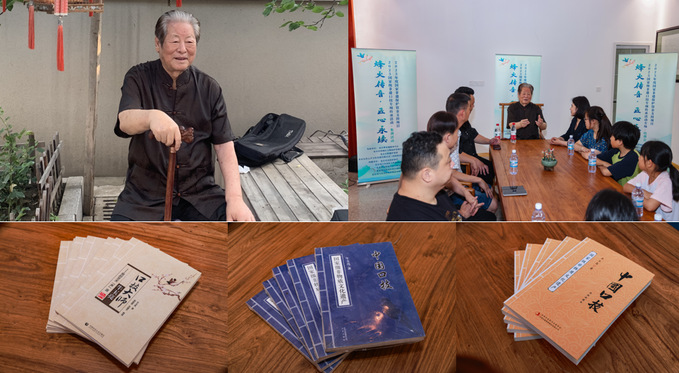
Niu Yuliang and His Monograph
Interspersed with photos of the master's performances, with introductions under the photos. Niu Yuliang (10th July 1938 - ), born in Beijing, was first introduced to the stage in 1953 under the tutelage of acrobat Liu Wanchun; in 1956, he learnt from Shanghai ventriloquist Zhou Zhicheng, and was taught by his uncle Sun Tai (the founder of modern Chinese Ventriloquism in China), who fused the essence of the two schools and became a great master of the contemporary art of Chinese Ventriloquism. The art of contemporary Chinese Ventriloquism has become a masterpiece.
There are many interesting stories in the master's career. The Beijing Acrobatic Troupe was sent to Bangladesh and Sri Lanka in 1979. Bangladesh was the first stop of this overseas performance, which was also the first time for Niu Yuliang to go out of the country, and his mood was as excited as many members of the troupe. When the chartered plane landed in Dhaka International Airport, the capital of Bangladesh, was warmly welcomed, the country gave the visiting delegation of high-profile state guest treatment, each person was offered a jasmine wreath.
The Performances in Bangladesh as the first overseas show after the ‘opening up’ policy,greatly boosted their morale and confidence. Next, the acrobatic troupe came to another important country in South Asia - Sri Lanka. In Sri Lanka, the delegation was received by the President of the country Junius Richard Jayawardena personally, the President also watched the show. Niu Yuliang performs Chinese Ventriloquism by the local audience, especially his imitation of the "Mosquito", perhaps because the country is located in the tropics more mosquitoes, leaving a deep impression on the local audience, let the local audience doubly surprised, so the local Sri Lankan people in Sinhalese called Niu Yuliang "Madulu" (mosquito), which is also regarded as his This is also a kind of accidental reward for his first performance abroad - he got a nickname from foreigners.
In 2011, Chinese Ventriloquism was added to the list of national intangible cultural heritage, and the following year, Niu Yuliang was awarded the title of the only national representative inheritor. He has devoted himself to the inheritance, systematically compiling endangered techniques, published a monograph on Chinese Chinese Ventriloquism, established a complete teaching system, and devoted himself to the education of rural intangible cultural heritage at the age of eighties or nineties to cultivate the new force. From a young boy in the field to a flag-bearer of non-heritage, he has spent his life to fulfil his oath of "letting the tradition be heard", and cast a living monument of Chinese Ventriloquism art.
Through the careful cultivation of his great-uncle and second-uncle, Zhang Jianping emerged the first female ventriloquist in four generations. Zhang Jianping dug deep into the local cultural genes, invited the ventriloquist master Niu Yuliang to teach in the village, led the villagers to blend the thousand-year-old skills with the green mountains and green water, and created an original programme "When Non-legacy Meets Green Water and Green Mountain" - copying the sounds of birds in the forests and winds in the streams and rivers in the human voice, and using traditional Chinese Ventriloquism to deduce the story of the times of ecological protection and dramatic changes in the mountainous countryside.
The fifth-generation inheritors are the children of Qingshui Primary School in Qingshui Town, where Sister Jianping is working, and it is heart-warming to see that the children have unlimited enthusiasm for non-heritage culture, which is also known as growing new green shoots. Using the mountains as a medium to awaken the cultural vitality of mountain villages. In the inheritance of generations I see the dawn and vitality of China's non-heritage, no longer let it float on the surface, but in the life of innovation and continuity.
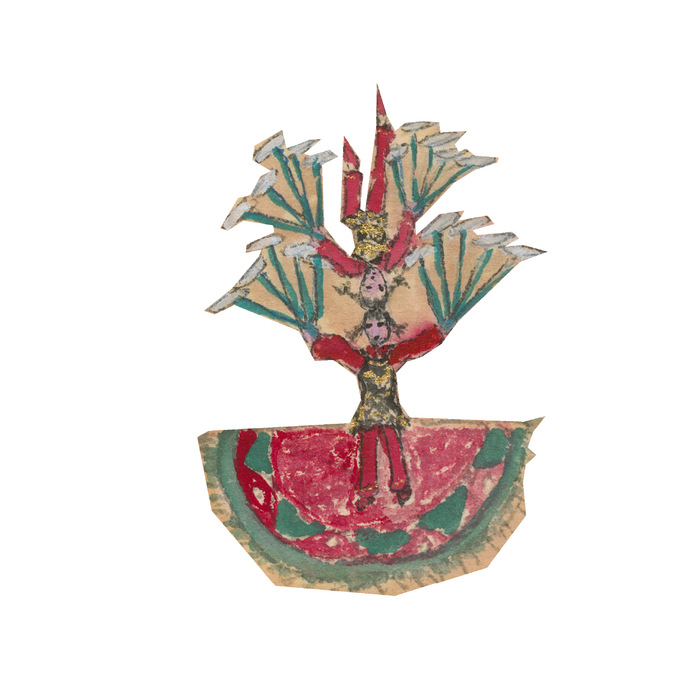
IV. The contemporary value of non-heritage culture in the global context
During his seventy years of artistic career, Master Niu Yuliang pioneered the "Circular Luck Method" and "Circular Sound Method", which broke through the limitations of traditional Chinese Ventriloquism's breath and vocal range, gave this millennium-old art a richer expressive power, and promoted its sublimation from an art of the marketplace to a stage art. His masterpieces, such as "A Hundred Birds Contesting for Songs", have created a unique style of "blending sound with scenery", which has become a model of innovation for non-legacy.
As a cultural ambassador, Niu Yuliang has travelled to dozens of countries in Asia, Africa, Europe and the United States with his Chinese Ventriloquism, reproducing natural phenomena with his human voice, and displaying the beauty of Oriental acoustic rhythms at the United Nations Headquarters and the Paris Art Festival, so that the world can hear the profoundness and spirituality of Chinese culture.
Master Niu Yuliang fondly recalled that in the 1950s, when he went to Moscow with his troupe to perform, the head of the Ministry of Culture of the Soviet Union proposed to use two of their best arts to exchange with Chinese Chinese Ventriloquism and gucai jugglery, and to teach each other the best arts.
Nowadays, the master has a lot of fans, the British blogger Situ Jianguo is one of them, before the interview with the master, he learnt to imitate a lot of animal calls, and did not forget to ask the master to teach him during the interview, Master Niu half-jokingly that Situ was the first foreign disciple he had ever accepted.
The series of Chinese Ventriloquism activities in Hongshuiyu Village broke through the static framework of intangible cultural heritage (ICH) exhibitions. Through cross-disciplinary experiments like "Chinese Ventriloquism + calligraphy and painting" and "Chinese Ventriloquism + ecology,and immersive showcase" alongside various performances, these activities allowed audiences to intuitively perceive the Eastern aesthetic of "sound containing imagery and imagery resonating with sound" through experience and interaction. Moreover, they enabled the ancient craft to engage in dialogue with modern aesthetics, forging a symbiotic journey between national-level ICH Chinese Ventriloquism and the ecological aesthetics of Hongshuiyu Village.
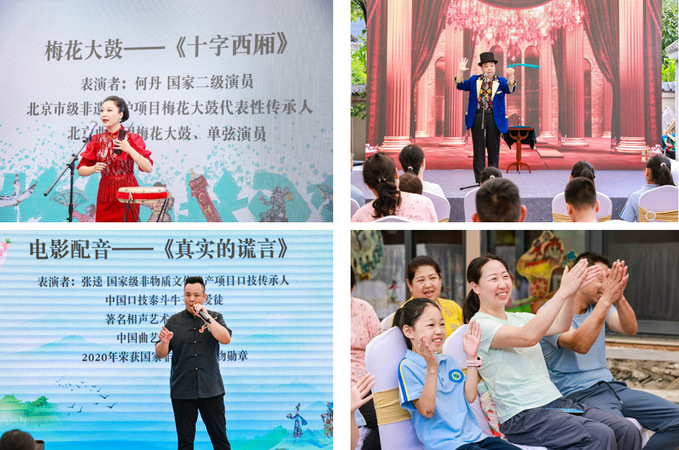
Situation at the Event Site
The static exhibition has systematically sorted out the historical development of Chinese Ventriloquism in China through the study of intangible Chinese Ventriloquism culture. The phenomenon of the millennium-long transmission of Chinese Ventriloquism breaks through the traditional unidimensional interpretation of masters and apprentices, and builds up a double dimension of academic value: the technical level establishes a dynamic balance between imitation of natural sounds and the scientific system of vocalisation, while the cultural anthropological level completely records the embodied memories of the intergenerational transmission of the family. From "unidirectional export" to "cultural dialogue", from "transmission of skills" to "transmission of heritage", from "dissemination of information" to "transmission of knowledge". From "dissemination of information" to "dissemination of culture", whether the masters travelled all over the world to perform on stages in the old days or performed and exchanged Chinese Ventriloquism on behalf of the country as a cultural messenger in the new days, all these are the anchors that help maintain their culture and self-recongnition of a region, nation or country.
Chinese Ventriloquism is not just a craft, but also a memory. By visiting five generations of Chinese Ventriloquism inheritors, we have gained a clearer understanding of its history and nurtured a stronger longing for its vibrant future. We anticipate that artists will achieve new heights in cross-disciplinary art and innovation, presenting a unique rural aesthetic.
This also tells us that the contemporary survival of traditional crafts is not merely about protection at the ontological level of the craft itself; more importantly, it requires activating their contemporary value from a cross-cultural perspective. The cultural practice and innovation carried out through today’s exhibitions and performances are not just a village-wide aesthetic lesson on intangible cultural heritage. Their value lies in reorganizing these folk skills into narrative texts that can be accepted and esteemed by the world.

On-site Group Photo
Contributed by Ding Weiyi
School of International Studies,Communication University of China
Some of the pictures, videos and audio materials in this article are provided by Hongshuiyu Village
Editor: Huang Yifei, Zhang Minglang
Responsible Editor: Zheng Liuyi
Managing Editors: Yu Ran, Chen Yiwen












